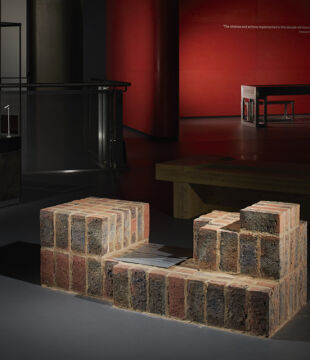
Details
Project Country: China
Architect: Inner Mongolian Grand Architecture Design Co., Ltd.
Brickwork Contractor: Tumed Left Banner Zhida Longxin Planting & Breeding Cooperative
About the project
The Mazongshan Visitor Center is nestled under the west slope of the Mazongshan Ski Resort in the southeast of Hohhot City. Encircled by mountains and backed by a homestay village transformed from an abandoned settlement, the Visitor Center offers a range of amenities, such as a reception area, restaurant, café, fitness area, shop, and a chess and card room. The building is predominantly single-story, with a mezzanine level in select areas.
To harmonize with the surrounding brick houses in the village, this project uses brick as the primary material, maintaining the site's natural texture and fostering a warm, unpretentious, and relaxed atmosphere. Brick is applied to steps and the perimeter of the side yard, with boundaries defined by vertically laying the bricks, their short edges oriented toward the building. The entrance square combines directional brickwork—aligned both toward the main entrance and perpendicular to the western facade—to guide foot traffic. Traditional brickwork masonry techniques were employed on the exterior walls to create a square lattice pattern, creating a play of light and shadow that evokes a sense of mystery and dynamism. The gables feature layered bricks laid in the same direction, with bricks near the roof ridge rotated to highlight the structure's solidity and three-dimensionality. Gable eaves and lintels above doors and windows are capped with vertically laid bricks, clarifying boundaries and giving the building a neat, streamlined appearance. The roof is finished with 3cm-thickness thin bricks atop the waterproof layer, lending the structure an overall sense of lightness.
The design incorporates a sloping roof that echoes both the contours of the nearby hills and the pitched roofs of the local houses. This large-scale roof structure follows the natural downward slopes, blending seamlessly into the surroundings while establishing a distinct presence. The inner courtyard plays a central role in spatial configuration, facilitating natural daylighting and ventilation while drawing the outdoor scenery into the interior. Aside from basic leveling treatments, the site's natural elevation changes were left largely unaltered, respecting the existing terrain and minimizing costs.
The combination of warm red bricks and transparent glass create a relaxed atmosphere, encouraging interaction between the interior and exterior. The design also adapts the tourist route vertically, aligning it with the changes in the terrain to simulate the experience of mountain climbing. Covered corridors further enhance this journey, enriching the overall visitor experience.















